Reviews of books in the ‘history, memoir and biography’ genre remained constant for July, with nineteen books reviewed over the month .There were insightful reviews on books that have been mentioned in round-ups earlier this year, including Anna Greenwood’s review (here) of Julia Baird’s Victoria: The Queen, Bernard Whimpress’ review (here) of Jill Roe’s Our Fathers Cleared the Bush and Louise’s review (here) of Elspeth Muir’s Wasted. But several books were reviewed for the first time as well.
Indigenous Writing
Two compilations of writing by indigenous women were reviewed during July, both highlighting the intersections between Australia’s colonial history, place, and the lived indigenous experience today. Gugu Badhun: People of the Valley of Lagoons tells the story of the Gugu Banhun people of North Queensland through a combination of interviews and analysis. In her review, Therese Petray writes: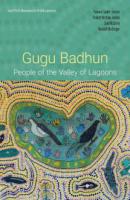
Gugu Badhun: People of the Valley of Lagoons is a concise history of one Aboriginal nation. It builds on the past few decades of uncovering the unacknowledged history of colonisation in Australia, and the growing recognition of the effects on Aboriginal and Torres Strait Islander peoples. It represents the likely next stage in the discipline of history, with its very localised focus on one nation. This enables the book to be really specific, not just in terms of events that happened but also the analysis of how they have affected the Gugu Badhun people. (review here)
Weezelle at ‘Words and Leaves’ reviewed a collection of essays written by indigenous academic and community leaders from Western Australia in Us Women, Our Ways, Our World. Weezelle writes:
By presenting a series of essays from Indigenous academic and community leaders, Us Women, Our Ways, Our World takes a hard look at the continued impact of this country’s colonial history and the ‘constant struggle to overcome the insidious racism that is deeply embedded in Australian society’. Importantly, this isn’t delivered up through the usual (white man’s) lens of victimisation and helplessness, rather, the stories highlight the ways in which Aboriginal women have for years resisted colonialisation and oppression and have successfully raised strong, resilient families, notwithstanding ever-present …As the Introduction to this book points out, collections written solely by Aboriginal women are scarce. If for no other reason, this fact should compel Australians (and others) to buy and read this book. Some of it is damned uncomfortable reading, and at times it’s a bit rough around the edges, but it is also honest, insightful and even hopeful. This exploration of racism and sexism as experienced by Aboriginal women needs much further probing. (review here)
Indigenous memoir of a different kind is found in Ali Cobby Eckermann’s memoir Too Afraid to Cry. Sue at Whispering Gums writes:
Too afraid to cry is the story of a young indigenous baby adopted by a non-indigenous family. It’s a good loving family, with parents who, unable to have children, adopted four – two from the mission – and fostered another. But this family, as loving as it is, is a deeply religious one which does not understand the pain experienced by children from a different culture to its own…It’s told in 92 short anecdotal chapters, which are divided into four parts. The style is spare, with short, simple sentences. This is a book which shows rather than tells. Much of the commentary is conveyed through poems inserted between some of the chapters.…Too afraid to cry is an innovative and evocative memoir, which manages to convey hurt and pain, truthfully, but with a generosity that is humbling. (review here)
Creative women
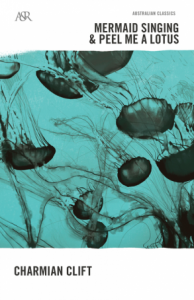 Australian journalist Charmian Clift and her husband author George Johnston lived for ten years on Greek Islands during the 1950s.The book Travels in Greece (under different tit le) contains two of Clift’s memoirs, Mermaid Singing (1958) about living on Kalymnos, and Peel Me a Lotus (1959) which dealt with their first year on Hydra. Bill Holloway’s review at the Australian Legend blog notes:
Australian journalist Charmian Clift and her husband author George Johnston lived for ten years on Greek Islands during the 1950s.The book Travels in Greece (under different tit le) contains two of Clift’s memoirs, Mermaid Singing (1958) about living on Kalymnos, and Peel Me a Lotus (1959) which dealt with their first year on Hydra. Bill Holloway’s review at the Australian Legend blog notes:
Clift’s writing is straightforward and clear, bringing to life the people they live amongst, and mixing in lots of geographical and historical background….I enjoyed both accounts, but the first, Mermaid Singing, more than the second, Peel Me a Lotus. The former has a friendlier feel, as Charmian and the islanders, with the utmost goodwill, learn to understand each other and become friends. So much so that, at the end of the book, it comes as a bit of a surprise when they decide to move on… Surprisingly, disappointingly, there is nothing at all about Clift’s and Johnson’s collaborative writing, or indeed about Clift’s life as a writer, at all. (review here)
 I hadn’t heard of Helen Haenke, whose memoir Helen Haenke at Rockton: A Creative Life was reviewed by Jeannette Delamoir at the Newtown Review of Books. Haenke was a doctor’s daughter, artist, writer and poet. She opened her historic home, Rockton, to her contemporaries in the creative scene of the 1960s and 1970s, including Rodney Hall, Thomas Shapcott, Bruce Dawe and Oodgeroo Noonuccal. However, Jeannette’s review conveys disappointment with the book:
I hadn’t heard of Helen Haenke, whose memoir Helen Haenke at Rockton: A Creative Life was reviewed by Jeannette Delamoir at the Newtown Review of Books. Haenke was a doctor’s daughter, artist, writer and poet. She opened her historic home, Rockton, to her contemporaries in the creative scene of the 1960s and 1970s, including Rodney Hall, Thomas Shapcott, Bruce Dawe and Oodgeroo Noonuccal. However, Jeannette’s review conveys disappointment with the book:
the format of the book lets her down with its informal, scrapbook-like layout of clippings, photos, works, manuscripts with hand-written amendments, and insightful unposted ‘letters’. There is no overarching autobiographical narrative, no sustained literary assessment, nor any substantial linking of her writing to significant life events. (review here)
Blurring the boundaries
 In recent years, there has been a blurring of the boundaries between author and subject, memoir and fiction. This is particularly the case in Lily Brett’s fictionalised memoir Lola Bensky, where the parallels between the author’s own life as rock journalist, and those in the ‘memoir’ of rock journalist Lola Bensky extend further than just the letters of their names.The book reaches further than this, however, into an exploration of Holocaust survival and its effect on succeeding generations. In his review, where he apostrophizes the word ‘memoir’, Bill Holloway writes:
In recent years, there has been a blurring of the boundaries between author and subject, memoir and fiction. This is particularly the case in Lily Brett’s fictionalised memoir Lola Bensky, where the parallels between the author’s own life as rock journalist, and those in the ‘memoir’ of rock journalist Lola Bensky extend further than just the letters of their names.The book reaches further than this, however, into an exploration of Holocaust survival and its effect on succeeding generations. In his review, where he apostrophizes the word ‘memoir’, Bill Holloway writes:
To be honest, I avoid Holocaust books. Like every other person in the western world I know it happened, and in a general sense, what has happened since. But Brett says that Australia has the highest proportion of Holocaust survivors of any country in the world, so the Holocaust is an Australian experience too. I’m still not sure I want to know more about it – factual or fictionalized – but I found this ‘memoir’ profoundly moving. (review here)
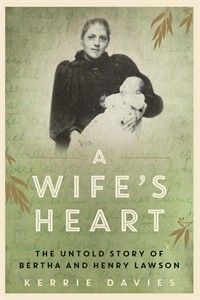 Kerry Davies’ analysis of Bertha and Henry Lawson’s marriage in A Wife’s Heart: The Untold Story of Bertha and Henry Lawson draws on historical and literary evidence, but it also blurs boundaries between biography and the author’s own memoir. In her review, Janine Rizzetti remarks that:
Kerry Davies’ analysis of Bertha and Henry Lawson’s marriage in A Wife’s Heart: The Untold Story of Bertha and Henry Lawson draws on historical and literary evidence, but it also blurs boundaries between biography and the author’s own memoir. In her review, Janine Rizzetti remarks that:
Kerrie Davies is very much on-stage, using her own early 21st century experience as a lens through which to examine and reflect on the marriage and separation of Bertha and Henry Lawson. The book both starts and finishes with Davies’ own reflections on single parenthood and she shuttles back and forth between her own memoir and a biographical examination of Bertha and Henry Lawson. (review here)
Memoir-ialising
 In 1989 Australian Historian Sheila Fitzpatrick married Mischka Danos, a theoretical physicist after meeting him by chance on a plane, falling into conversation, and then falling in love. He died ten years later. Fitzpatrick’s book, Mischka’s War, tells her husband’s story. In her review, Jennifer Cameron-Smith writes:
In 1989 Australian Historian Sheila Fitzpatrick married Mischka Danos, a theoretical physicist after meeting him by chance on a plane, falling into conversation, and then falling in love. He died ten years later. Fitzpatrick’s book, Mischka’s War, tells her husband’s story. In her review, Jennifer Cameron-Smith writes:
In this book, Ms Fitzpatrick pieces together Mischka’s life before she knew him, through diary entries, correspondence and recollections from others who knew him. It’s a way of remembering Mischka, of keeping him alive, of trying to understand his past. It also provides insights into the impact of World War II, on a family from the Baltic state of Latvia. (review here)
An environmental memoir
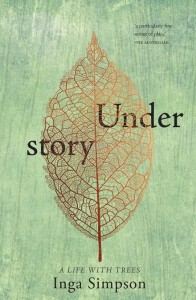 Nature writing and memoir don’t often come together, but they do in Inga Simpson’s memoir Understory. Cass Moriarty’s review found that the story provided “unexpected jolts of emotion against a background of contemplation and introspection”:
Nature writing and memoir don’t often come together, but they do in Inga Simpson’s memoir Understory. Cass Moriarty’s review found that the story provided “unexpected jolts of emotion against a background of contemplation and introspection”:
Inga’s love for nature, and her skill as a nature writer, are clearly evident throughout this work. In fact her knowledge, her environmental compassion, and her ability to articulate aspects of the natural world in a way both interesting and impassioned, inspires a curiosity that is infectious… This is an intimate story by a writer who is a keen observer of the world around her and her place in it. It leaves a strong impression of nature, and a vivid sense of place. (review here)
Another strong month of reviewing such varied books (and what beautiful covers!)
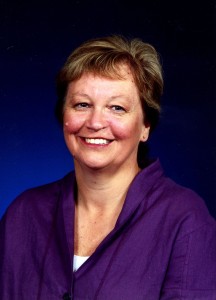 About: I’m Janine Rizzetti and I blog at the immodestly-named The Resident Judge of Port Phillip where I indulge my love of reading, history and seeing films and exhibitions just before they close. I am a historian, interested in Australian and colonial history, officially retired but more occupied than I thought I would be with my local historical society and learning Spanish.
About: I’m Janine Rizzetti and I blog at the immodestly-named The Resident Judge of Port Phillip where I indulge my love of reading, history and seeing films and exhibitions just before they close. I am a historian, interested in Australian and colonial history, officially retired but more occupied than I thought I would be with my local historical society and learning Spanish.





